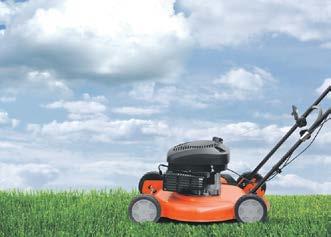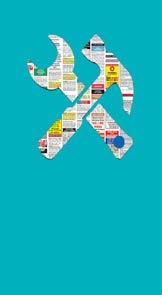

It’s driving them mad
By Roy PilottTo the uninitiated, they are rocks compared to normal golf balls.
We are talking about range balls – thousands of them are placed on tees on driving ranges around the country every day by club
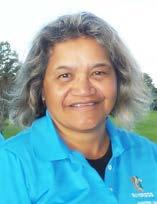
and social golfers aiming to improve their technique.
They are good for practice, but no golfer worth his or her salt would want to play a round with them.
Which is why Te Awamutu Golf Club manager Mary Wano is flummoxed.
She estimates since the country emerged from Covid something in the region of 5000 range balls have been taken out of bounds by thieves.
When no eagle eyed staff are on course, the burglars swoop and make off with every ball they can find.
And par for the course, when thieves strike, good people lose out.
Wano has closed the driving range – which is
Job done…

appreciation for
See
usually open to the public – while a solution for the problem is sorted. She says it will have to reopen because it’s such a popular community asset – but having to order bucket loads of balls on a regular basis to make up
for the stolen ones is a gross inconvenience.
Collections at the end of the range were being made three mornings a week – it’s likely the collection numbers will increase and be later in the day when the range opens again.
But seriously – at $8 for a bucket of 35-40 balls to practice with in your own time, you would go a fairway to get better value for money.
It makes you wonder – who is the mystery handicapper?

report on page 3 today.








 By Roy Pilott
By Roy Pilott
Council in chief talks
Waipā District Councillors appeared to be closer – if not close - to naming a successor for chief executive Garry Dyet this week. They were to meet at Karāpiro –after this edition went to press - to discuss the appointment of a new chief.
Reasons for going behind closed doors to discuss the issue were listed as “to carry on, without prejudice or disadvantage, negotiations (including commercial and industrial negotiations)” and to “protect the privacy of natural persons including that of a deceased natural person”.
Dyet announced in November that he would stand down after 15 years in the role – having originally joined the council in 1980 - giving the council ample time for find a successor.
The chief executive is the only position appointed by the elected council.
He or she will walk into a council which, like most around the country, is confronted by significant cost challenges.
Waipā has already bitten the bullet and shelved some major work – a $33 million museum plan was officially put on hold last month because of a “significant change” to the financial landscape.
At the time Dyet reported “it is prudent for all project works to be paused, including the discharge of the Te Ara Wai governance committee”.
But infrastructure work continues – businesses in Hautapu were given an update just last week on the extensive work being carried out on the district’s newest industrial hub.


Discounts announced
Waipā Networks customers will receive an average discount of $100 on their next bill. Customers receive two discounts each year, and in the upcoming round, close to $2.6 million will be distributed back to customers via their retailer.
Individual discounts are calculated based on the property’s power use and price plan. The latest discount covers the period between September 2023 and March 2024. To be allocated the discount, a customer must be the current registered power user at the property.

The latest discount will be captured on each customer’s next retailer electricity bill. In the current financial year, around $5.4 million in discounts has been distributed to customers.
When rail ruled
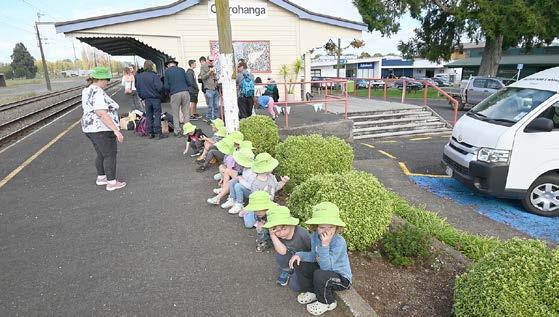 By Paul Charman
By Paul Charman
The golden age of passenger rail was recalled when old met young at the Ōtorohanga Railway Station last Thursday.
Here’s how the last week looked for Te Awamutu police.
Monday - Police served multiple trespass notices on a recidivist shoplifter on behalf of fed up retailers. Five warrants to arrest were issued in the Te Awamutu District Court. Police received a report of a suspicious vehicle and attended a family harm incident at an address in Te Awamutu.
Tuesday - Police attended a self-harm incident and were attacked by a dog at a violent family harm incident where a male was arrested for breaching a Police Safety Order. We received a report of wilful damage and attended a family harm incident where a Police Safety Order was issued. Police issued a trespass notice after a male verbally abused staff at a recreation centre and we received two reports of a burglary. A female was trespassed from a petrol station and police attended a family harm incident.
Wednesday - Police attended a selfharm incident and a family harm incident where a Police Safety Order was issued. We attended an assault incident at the Rose Gardens, a minor motor vehicle collision on State Highway 3 and a self-harm incident. A male had a motor vehicle collision after consuming alcohol.
Thursday - Police received a report of theft of a cell phone, attended a self-harm incident and a civil dispute matter. A male decamped after being issued a Parole Recall Warrant, police attended a shoplifting incident and a

burglary was reported at a school.
Friday - Police attended two family harm incidents, a burglary was reported at a commercial premises, police recovered a stolen vehicle taken in a burglary and a male was arrested for obscene behaviour.

Saturday - Police attended a theft, a male was found to be unlawfully in an enclosed yard, police attended a burglary. We attempted to stop a vehicle travelling at 141kph, the vehicle subsequently failed to stop.
Sunday - Police attended a suspicious persons incident and a burglary, a male was arrested for a shoplifting spree, a male was arrested for breach of bail at a family harm incident and a driver fled from police after an attempt to stop his vehicle. Police arrested two males in the act of committing a burglary.
Also I would like to talk briefly about Community Patrols and the work they do. They are currently recruiting members to patrol. It would be great to get more patrollers on board to help keep our town safe. Patrollers only need to commit to one weekend shift a month. There are two dates for people who are interested - Saturday 121.30pm and Tuesday 6.30-8pm at 19 Lyon St, Kihikihi. Meet to some of the volunteers and discuss the volunteer role.
The idea was for senior citizens from Hillview Home, Te Kūiti, to meet and chat with youngsters from local schools and preschools to explain how train travel was part of every day life when they were growing up.
The children will be encouraged to draw pictures based upon these conversations which will be displayed during the 100-yearcelebrations of Ōtorohanga Railway Station on June 8.
The station will mark its centennary with an event which will close off Wahanui Crescent for a market and involve historic photo displays, street performers and vintage cars and tractors.
train.
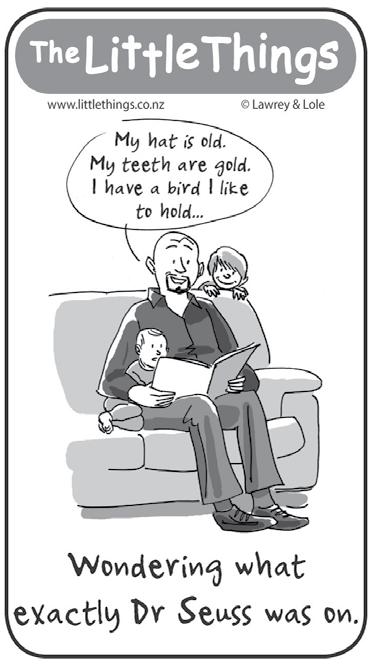






Prices held
Waikato Regional Council will freeze bus fares for two months beyond the end of government subsidies for agebased public transport. The end of the subsidy will prompt a 20 per cent rise for Busit and Te Huia services – but not until June 30.
Getting creative
Te Awamutu Creative Fibre
Group members will join the pop-up shop community next week to sell items they have made. They will be showing off their spinning, weaving, knitting and felting talents at the Enrich Plus Gallery in Teasdale St for a week starting next Monday.
Out with the old Watermains – some almost a century old – are being replaced in central Cambridge. Waipā District Council says its watermain renewal programme is moving into the Cambridge central business district and in Dick Street disruption will be minimised as it coincides with it being closed for work on the Cambridge pathway project.
Grants available
Rotary Cambridge plans to provide grants of up to $1000 to apprentices in the Cambridge area in building and construction trades. The club is making six grants available and they will be announced from applicants on June 13.
Liz on board
Waipa deputy mayor Liz Stolwyk has been named as one of the new members of the New Zealand Liberation Museum – Te Arawhata France trust. Outgoing chair, former deputy Prime Minister Don McKinnon, is succeeded by NZ Rail chief David McLean.
Shelling out?
Fisheries New Zealand wants feedback on applications from iwi for temporary fishing closures across three areas in the Hauraki Gulf. If approved the taking of some shellfish species from these areas would be banned for two years.
Ōhaupō gets some love
It was a case of no pain, no gain, when a six month roading project started to provide Ōhaupō with a crossing an appropriate parking. Retailers who felt that pain are now celebrating the gain. Chris Gardner reports.
Ōhaupō businesses are toasting the end of six months of disruption as the council installed a signalized pedestrian crossing.
Great South Road business owners talked of short-term pain for long term gain, with one claiming it had lost up to half of its income as Waipa District Council installed a crossing in the centre of the rural community.
The project started in November and finished on Thursday (April 18). It included the construction of three raised safety platforms to slow traffic, formalising carparks, and upgrading and moving bus stops close to the new crossing.
“It does look good. Now Ōhaupō has some love.”
Ohaupo Store manager Manraj Singh described the upgrade as “really good, making Ōhaupō a lot better” despite it impacting his family’s business revenue by between 40 and 50 per cent. “There’s not much we can really do, but we have told the council,” he said. “It’s good that the upgrade is out of the way.”
Ōhaupō Bakehouse Café owner Sreymom Ty said she had struggled through the project and lost regular customers as it had been easy to pull over and stop.
“It was very hard,” she said. “We are pleased that they have finished here.”
She was grateful for the creation of designated parking spaces outside of her shop, but it had brought a new problem.
“Some people park here to catch the bus,” she said.
Ty has asked the council to impose parking limits on
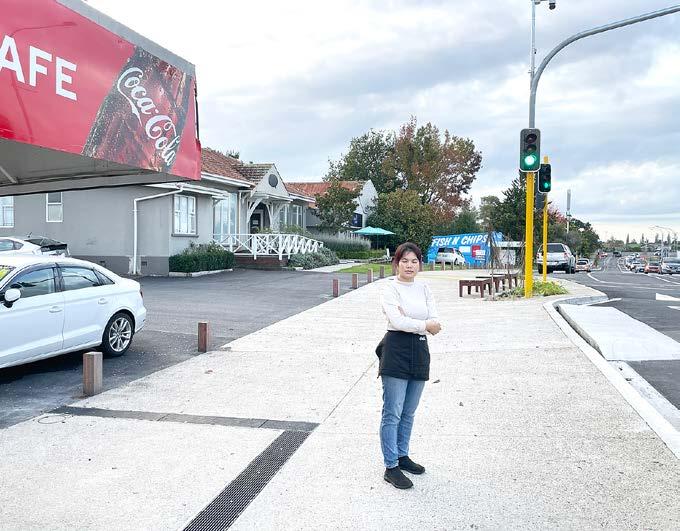
the spaces and is awaiting a response.
Inspiration Boulevard Bar and Eatery suffered what business owner Natalia Robson-Bush called a “significant impact” as it closed for six weeks during the project.
“What can you do?” asked Robson-Bush.
She supported the installation of the crossing.
“Someone was going to die crossing to that dairy.
“It does look good. Now Ōhaupō has some love.”
Ōhaupō Caravans manager Grant Gordon said his businesses had suffered “a little bit of inconvenience, we had limited access to our drive for seven or eight

days, but it’s all for the greater good”.
Gordon said the project team was good to work with and communicated its plans well with businesses.
“It’s all happy days, it’s great to see the end of the road cones”.
“It’s a really big refresh,” said Ōhaupō Drinks Station owner Brett Anderson before raising a glass with duty manager Krystle Boyle and Jacket Beverage Company owner Gerard Mooney.
He said there was never a good time to embark on such a project when there were 12,700 vehicle movements in Ōhaupō per day,
At times during the
project traffic backed up from the heart of Ōhaupō to the school.
“You just deal with it. It’s good that it’s finished.”
Anderson’s business only lost 90 minutes of trading during the project.
“We were quite fortunate,” he said.
He was grateful to the project team for laying steel road plates outside his business allowing customers to pull over and park.
“They were really good to work with.”
He was also grateful for the way the community supported his business during the project.
Mooney described roadworks as “just part of
life” and said he appreciated the result.
Ōhaupō Antiques and Collectables owner Jane Hurley said she tried to stay positive throughout the project.
“We had to shut down for two days,” Hurley said.
Hurley was impressed with the skills needed to lay a new footpath around her shop’s verandah posts.
“It was Ōhaupō’s turn, and we were last on the list to be done,” she said.
“It needed it, as it’s an extremely busy road.”
But when the shop was open collectors still pulled over to browse and buy.
“Collectors were not put off getting into the shop.”
Celebrating Life - Your Way
We believe that each funeral service should be as unique as the life you are celebrating. When a funeral is personalised, it creates a special space for sharing precious memories, telling stories, and simply being together with friends and family.
Rosetown Funeral Home are dedicated to providing personalised and meaningful funeral services, and are happy to discuss new ideas, pre-planning and/or pre-paying for your funeral. We are here for you in your time of need, so please get in touch anytime to discuss your options.






















Mergers – a conversation first
By Roy PilottA national conversation about local, regional and national decision making and service provision is needed before any discussion about amalgamation, a Waikato local body leader has told The News.
Waikato Regional Council chair Pamela Storey says optimal structures must be identified first.
Her comments were the latest in responses to requests from the News for views from district leaders after the Waikato Chamber of Commerce chief Don Good said it was time to have a conversation about regional boundaries.
“For any change to be effective, we think all government functions and roles need to be reviewed before restructuring local government,” Storey said.”
“In other words, form must follow function.”
Good listed 13 potential players – suggesting western
wards of Rotorua Lakes district could be in the frame for debate.
The News has sought comments from leaders and has received feedback from Storey, Rotorua’s Tania Tapsell, South Waikato’s Gary Petley, Waitomo’s John Robertson, Adrienne Wilcock (Matamata Piako) and Len Salt (Thames Coromandel).
We are hoping to get further comments from Jacqui Church (Waikato)
Paula Southgate (Hamilton)
Susan O’Regan (Waipā) David Tewavas (Taupō)
Toby Adams (Hauraki) and Max Baxter (Ōtorohanga). Good also included Franklin, part of the Auckland council.
Rotorua’s Tania Tapsell told The News it was difficult to believe combining councils would bring additional benefit.
“Amalgamation has overhyped efficiencies and has already proven to be a failure with both the recent health and tertiary education
‘Central government has to stop loading work onto us without the funding to go with it –the ‘unfunded mandate’
must stop,’ - Pamela Storey.

sector reforms that combined local to nationwide entities,” she said.
“I’m a strong advocate for keeping decision making local. Each community in the region is unique and has their own priorities. People who pay rates want to see some benefit of it in their own neighbourhoods. I’d be very concerned that if councils combined, the bigger population cities might suck up all of the funding.
Pamela Storey believed “overall” local government do a good job for communities, and in the Waikato regional, city and district councils worked well together.
“Regional spatial planning has been included in our
'The biggest challenge is trying to run and maintain a city on funding limited to the rates we collect from our residents,’ – Tania Tapsell.
long term plan and is a piece of work that will enable a more collective voice for the region. It will also lead to better informed decisions and smarter investments to improve the wellbeing of our communities and environment.
“Importantly, it will ensure a joined-up-approach to things like housing, transport, climate change, economic development, health, infrastructure, the environment and culture, and so much more.”
But she added it was clear councils were straining under the pressures of capacity issues and lack of funding.
“Central government has to stop loading work onto us without the funding to go with it – the ‘unfunded mandate’ must stop. Direct investment, support and empowerment of local government under a long term partnership approach is way more effective and efficient, but must be informed by place-based expertise and knowledge, including mana whenua and communities.”
Storey said her council was always open to discussions that will increase efficiency and effectiveness of local government for the benefit of our communities.
It was a point also made by Tapsell who, in suggesting it was better to focus on “what we have”, said there was always room for improvement.
“The biggest challenge is trying to run and maintain a city on funding limited to the rates we collect from our residents.
“A better solution to help

councils deliver more for those we serve would be the Government assisting us with additional funding for critical services like water and roading.” She suggested that could start with councils keeping a portion of the tax they pay to reinvest back into their communities, “keeping it by local, for local”.





Marking the way for history
The first of nine markers on the Taiea te Taiao ecological corridor from Maungatautari to Pirongia has been blessed.
The marker recognises a significant site of trade prior to European settlement in Waipā.
Taiea te Taiao is seen as a vehicle to foster biodiversity and acknowledge historical sites. The new marker is sited at Rāhiri Farm on the western side of Maungatautari,
Further markers and a pou will be installed at each site of significance along the corridor and have a QR scanner that links to a short video and explanation of the area and trade.
The next marker will be installed in Te Awamutu
opposite the War Memorial Park in the middle of the year.
Bill Garland is the custodian of the land and owner of Rāhiri farm.
The installation of the first marker on his family’s farm serves as the starting point for connecting the stories of pre-European settlement with the present. The Garland farm is one of New Zealand’s oldest known locations of pre-European trade.
Over 200,000 native trees have been planted at each heritage site along the corridor, which runs from Maungatautari to Pirongia, following the Mangapiko stream.
The conservation work
Get Gardening
If you have pip and stone fruit trees make sure to give these a prune on a nice dry day once they have lost their leaves. Follow up with a spray of lime sulphate and then a copper spray to protect then against leaf curl, black spot, leaf spot and blight come June/July. Prune feijoas bushes once all fruit is harvested. Plant winter vegetables – cabbage, broccoli, cauliflower, silverbeet, spinach and beetroot in raised garden beds to help with drainage. Pests like white butterfly, slugs and snails are really making a nuisance of themselves now so make sure to protect against them. It’s now time to replace summer annuals with winter flowers like primula, polyanthus, pansy and viola, dianthus and poppies. Ensure spring bulbs are planted now if not already done.


has gone hand in hand with pest control pest control and species monitoring which will continue over the next two years.
While clearing bracken about 50 years ago, Bill Garland discovered many cutting tools and obsidian used by Māori, which have been looked after at Rāhiri farm. Food storage sites are still visible on the farm, showcasing where Māori once lived.
Moa bones were also found on-site, and there were signs the marrow had been scooped out. The finds indicate moa lived on Maungatautari.
New Zealand Landcare Trust Mātauranga Māori facilitator Te Ao o te Rangi Apaapa says it is important to cherish the environment and restore the remains of pre-European trade on the land.
“The marker helps to share the stories of our beginnings as we continue with our ecological efforts today,” he said.
Waipā Networks provided their services to install the first marker near the predator-proof fence around Maungatautari.
Operations delivery manager Mark Mita said the poles “will stand the test
of time” and recognise the significance of the area for many generations to come.
The project also involved

ON SHAKY GROUND
It’s not the size that counts
By Janine Krippner“The biggest volcano in *placename* is set to erupt!”
Something along those lines have splashed across headlines through the years and it always gets an eyeroll from me. It’s not the size of the volcano that counts.
There are different ways to measure the biggest, whether it be volume, height from the sea floor, highest altitude… and none of those things tell us that the volcano is going to unleash wrath on the planet. Mauna Loa is the largest at 17km tall from its base on the sea floor, and this volcano tends to erupt fluid lava flows that have built up the cone over roughly a million years.
Volcanic fields like Auckland produce many smaller cones and craters during relatively small eruptions, but the field itself can span hundreds of kilometres or more. Then we have our calderas like Taupō or Okataina that are produced when large enough volumes of magma erupt, causing the ground to collapse. The largest of these eruptions earn the volcano the title “supervolcano”, but as I have said many times, they have far more eruptions that are much smaller and maybe only one or two of the “super” size.
The larger cone volcanoes can form by producing thick lava flows and domes that don’t move very far from the vent (for example Mount St. Helens, USA), but can also have significant (or small) explosive eruptions. Other cone volcanoes have thinner and longer lava flows as well as a lot of ash and scoria. Volcanoes like our largest, Ruapehu, have different active vents over time, producing a broader complex shape. Ruapehu’s size alone doesn’t hint about lahars (volcanic mudflows or floods), a hazard that has been deadly in recent times. A volcano’s size can also be reduced by flank collapse (for example Ruapehu and Taranaki), glaciers carving out large valleys, or just being old and slowly eroding away.
In school we are taught that the shape of a volcano tells us what sort of eruptions it will produce, but that is a vast simplification. Every volcano type can produce a range of eruption styles, and we can even see different styles in one eruption episode. The 1950s Ngāuruhoe activity at times produced lava flows and Strombolian eruptions visible from Taupo, and then more explosive Vulcanian eruptions that sent ash and boulders into the air. There are a
lot of factors at play that control what eruption styles we get and those can change over time.

What we can do is look at the entire spectrum of activity at volcanoes and understand what each one is more likely to do, what the different impacts would be, and what areas will likely be impacted.
The next step is to consistently monitor volcanoes through time so that we can detect early signals of something going on far before you can see or feel signs at the surface.
Here in Aotearoa research on the volcanoes is done through universities and GNS Science, the monitoring is done by GNS/GeoNet, and the warnings about what might happen and what actions to take are given by GNS and Civil Defence.
It takes a large, continued effort to make sure we can give communities and stakeholders, like our farming communities, the right information to be prepared for our volcanoes doing what volcanoes do. Thankfully we are far beyond the point of judging what a volcano will do based on its size.










Racing to Cambridge
Cambridge has become the physical home of New Zealand Thoroughbred Racing.
Its head office has moved almost 500 kilometres north from Petone to Dick St Cambridge and the move sees more than 45 employees find a new base in what was once the town’s police station.
NZTR will continue to operate Petone as a satellite to the Cambridge Head Office until October when all its activity comes north.
The decision behind the move was not a hasty one. A small content and marketing team had operated out of Cambridge for seven years as a satellite of the Petone head office.
The pull to move closer to the breeding and racing action in the central North Island eventually became was too strong for NZTR chief Bruce Sharrock not to consider.
“This move is hugely significant for NZTR and
the Thoroughbred Racing industry,” he said.
“While Wellington is the hub of economic and political activity in New Zealand, it was also the home of horse racing for many decades.”
“The shift North has gradually happened over the past decade and with the large majority of our horses being bred and trained in the Waikato, it makes sense for NZTR to be immersed in the region to best support our industry and stakeholders.”
Established in 2003 as a merger with New Zealand Racing Conference, New Zealand Thoroughbred Racing (NZTR) is the governing body for thoroughbred horse racing in New Zealand.
In 2023 nearly $1 billion in economic activity could be attributed to thoroughbred racing and the Waikato accounted for 48 per cent of that activity. More starters hail from the Waikato than any other region and more
than 45 per cent of the foal crop was born in the region.
The industry generates more than 3500 full-time equivalent jobs in the province.
The racing industry is enjoying a good run in Waipā – earlier this month the district hosted the biggest harness racing night event in the country.
An artificial track on the outskirts of Cambridge has also been a major success for the thoroughbred industry.



Three Bridges for Cambridge?
A group of concerned Waipa residents are holding a public meeting to :
• Hear people’s positions
• Identify current traffic problems
• Look at potential options for the third bridge
• Establish where to next
• Offer help with making a submission
Cambridge Town Hall
Wednesday 1 May 5.30pm – 7.30pm
(A gold coin donation is requested to help cover costs)
In loving arms
By N By Samuel Pullenger Ministry Assistant, St John’s Anglican ParishAs a child I never felt like we lacked anything we needed. Though we did not have all the fancy extras that some of those around us had, my parents made sure that the financial stresses of life never impressed upon us kids.
For my parents one of those financial stresses was the need to clothe all three of us kids. As I am finding out, being the parent of a two year old, this becomes a seasonal issue as kids grow out of clothes, not fitting the clothes they wore last year. As a kid “handme-downs” became an exciting phrase in our house. Every once in a while, a family in our small church community, whose children had grown out of their clothes, passed them on to us.
My parents made this an exciting time to find out what cool clothes we had been given this time. This was especially exciting when one of the articles of clothing was a brand name pair of jeans that my favourite skateboarder also wore. This was something my parents intentionally made an exciting event, something to look forward to, which we still talk about today. For my parents, though, without this blessing there would have been even more financial stress.
The beginning of winter is one of my favourite times of year. I enjoy the cool air and being able to, comfortably, wear long pants and cardigans. However, winter is also a stress for many of us; we know that our electricity

bill will rise as we try to heat our homes, we will use more gas trying to heat our water, and we will also need to fork out more cash as we try to clothe our kids through the cold months. We are blessed in Te Awamutu with so many well stocked Op Shops, as well as social services including Loving Arms, who can support us when we are in need. Loving Arms is a charity focussed on supporting young families, with the motto: “Every baby matters and every baby counts”.
As a Christian, this motto is at the heart of what it means to follow Jesus. In the Bible a character named Abraham is blessed by God to be the Father of many nations. Within the blessing that God gives to Abraham he says, “I will make you a great nation, and I will bless you… so that you will be a blessing… and in you all families of the earth will be blessed.”
God’s blessing for Abraham was not just so that his family would be benefitted; rather that through him all people would be benefitted. We are, then, encouraged not just to benefit our own family, but to look around and see who else we can bless. As we enter this winter season, I encourage you to find a way to bless others, whether by donating to Loving Arms or one of the Op Shops, or by using your time to care for another. For those of us who need support, I encourage you to find a way to make it exciting and engaging for your family.

Positive to negative bag?
By Peter NichollThe stats department released the Consumers’ Price Index (CPI) for the year to March 31 on April 17 and it was initially viewed positively.
The CPI grew by four per cent compared with 4.7 per cent for the year to December 31,, 2023.
The share market briefly rose on the expectation that the reserve bank would start lowering its Official Cash Rate later this year, possibly as early as August.
But as people looked more deeply into the number, the views became more pessimistic. The CPI is divided into two broad segments called tradeable and non-tradeable inflation.
In simple terms, tradeable inflation is what we import from the rest of the world and non-tradeable inflation is what we generate ourselves.
The two facts that caused concern are, first, that the domestic element of the March CPI at 5.8 per cent was much higher than the imported element at 1.6 per cent.
Most of the inflation we are now facing is home-grown.
Second, while the imported element was continuing to fall in a comforting fashion, from three per cent in the year to December 2023 to just 1.6% in the year to March 2024, domestically-induced inflation had scarcely budged.
It had been 5.9 per cent in December and was 5.8 per cent in March. That’s running at a rate that still almost double the top of the reserve bank’s 1-3 per cent target.
return consumer price inflation to within the 1-3 per cent target range this calendar year. As I read the rest of their press release of April 17, I couldn’t understand where their came from.

The following are a list of the possible setbacks for this I found in the
The reserve bank’s press statement: there are some substantial increases in prices for rates, insurance and utilities in the nearterm pipeline; continued strength in net migration is leading to rising dwelling costs; oil prices are rising and so are global supply contract prices; growth in unit labour costs remains elevated; inflation expectations are still elevated in New Zealand and near-term business pricing intentions remain elevated.
In the days following the NZ March CPI announcement the international news on inflation also became bleaker. Tension in the Middle East pushed oil prices up further. The US Federal Reserve poured cold water on the global financial market expectation that they would soon be lowering their official interest rate.
Central Banks pulled the inflation genie out of the bottle where it had lain quietly for 30 years with their extraordinarily lax monetary policies a few years ago. They thought it would be easy to get the inflation genie back in the bottle again when the time came. The time has come. It’s going to be a lot harder than they thought.

When the bank decided to keep their cash rate unchanged at 5.5 per cent on April 10 they said in their press release that they were ‘confident’ that maintaining the rate at its current level for a sustained period would


We will all pay a big price for the central banks letting inflation return in the first place – and my words are deliberate, central banks are responsible for letting inflation return.
Trophy time in bowls
Cambridge, Central Cambridge and Pirongia clubs will host 2024-2025 Waipa Lawn Bowls tournament this weekend.
Eight clubs comprise the Waipa district - Cambridge, Central Cambridge, Kihikihi, Ōtorohanga, Pirongia, Raglan, Te Kuiti, and Te Awamutu.
The tournament is divided into three events and points are accrued over the day to find the winner of each trophy – Vagg Cup for men, John Hastie Cup for women, and Doug Myers Cup for players who have been bowling for less than five years.
Sixteen players from each club will
be following in the footsteps of some accomplished bowlers from the district who have competed over the past 30-plus years. The contest was originally called Central Zone but changed to Waipa Division Bowls Waikato in 1994 and women were granted their requests to hold their own tournament on the same day in 2002.
The Vagg Cup is named after a former Central Cambridge member, John Hastie was secretary treasurer of the Bowls Waikato from 1996 to 2017 and Doug Myers was a member of the no defunct Leamington Bowling Club.







A soldier’s tale
It began raining as the Te Awamutu Power Board’s pole gang in the Piopio district was completing its day’s work. The gang totalled five men, including the foreman, Ernest ‘Bob’ Spraggs. They were in no hurry on this July afternoon in 1925 as they hoisted the last hardwood pole into position.
The pole, which was to be placed in a hole 5ft 6in deep, was heavy, about 35ft long, and the strength of the entire gang was required to raise it. Pike poles - long metaltopped wooden poles used for reaching, hooking and pulling –
were being used and as Bob was lifting on one of the back pikes, the pole suddenly turned and rolled off the pike. Bob jumped to get clear, but floundered on the soft ground, and the pole struck him, rendering him unconscious. He was taken to a neighbouring homestead and Dr Nicholson, of Ōtorohanga, was called. Bob, 36, was in a bad state, and Waikato Hospital was asked to send an ambulance for him. This message was not received by the ambulance driver until 7.40pm. After extra fuel was collected the vehicle was finally on the road
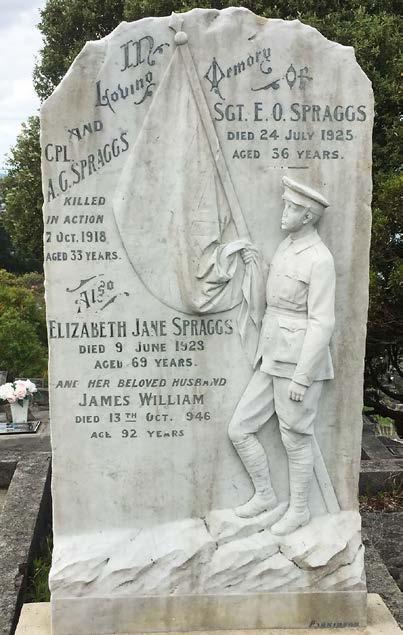
by 8pm. A harrowing journey to get to Bob ensued - the roads were rough, the night very dark, in places there was extremely thick fog, and fast travelling was out of the question.
About seven miles past Te Awamutu, a feed pipe to the engine became blocked and there was a long delay repairing it in bitter cold and intense darkness. It was 11pm before the driver got going again; only to take a wrong turn, disorientated by the dense fog. He eventually reached Ōtorohanga at 12.30am.
Finding the doctor’s house and then the accident site added further delays and the patient was finally reached about 1.20am. The doctor readied Bob and they set out on the return journey at about 1.50am. The trip could not be made over rough roads at a very fast pace, and in the interest of Bob only a very moderate speed could be reached.
As it was, even the slow going affected him, and on several occasions Dr Nicholson ordered the ambulance to be stopped altogether. They arrived at the hospital soon after 5.30am, the driver shattered from one of the most trying night journeys it had ever been his lot to experience.
Over the next few days Bob regained consciousness and progressed as favourably as could be expected but nine days after the accident he died. He left a widow, Jean, and a family of small children.
The Spraggs lived at Te Awamutu where Bob was a popular figure. He was a returned soldier with a fine record, having left with the Second Reinforcements, and joined up with the Main Body in Egypt. He was with the artillery continuously in France, attaining the rank of sergeant-major and being awarded the Distinguished Conduct Medal for gallantry in the field.
At the inquest, John Fraser, one of the gang, said he could not say what caused the pole to slip. He had assisted with many poles in a similar manner. The pole was of average weight, and the four

pikes were quite sufficient for the purpose. Waddington Garvey, also a member of the gang, thought the pole was a little heavier than the usual, although similar poles had frequently been put up previously with the same number of pikes. In his experience as a linesman he had seen poles slip, but the gang had always managed to get clear in time.
Frank Patrick Meyer, the Power Board foreman, said the method followed by the gang was the usual one. It was his opinion that Bob had slipped on the muddy ground, otherwise he would have surely managed to get clear.
The Coroner found that Bob Spraggs died from injuries accidentally received through an electric pole which he was erecting rolling and falling on him.
John was buried at Te Awamutu cemetery. His funeral was attended by many returned soldiers, and his coffin draped with a Union Jack that had been used in France on active service.
The coffin was carried to the hearse by four of Bob’s fellow employees of the Te Awamutu Power Board. By the time it got to the cemetery, the cortege had grown considerably. After the burial service the haunting notes of the Last Post were sounded for the courageous soldier who survived only a few years into peacetime.
Although interred at Te Awamutu, Ernest ‘Bob’ Spraggs is remembered on a family memorial at Hillsborough, Auckland where his parents are buried. His brother, Alfred, killed in action and buried in France in 1918, is also remembered on the memorial.
History top of agenda
By Paul CharmanThe National Association of Historical Societies gathered in Taumarunui for their annual meeting on Saturday.
The treasurer of the Taumarunui Historical Society, Audrey Walker, said the group, comprising more than 30 visitors, were drawn from historical societies in Auckland and the Waikato, including from Waipā, Cambridge residents Jo Barnes and Heather Wellington.
There were also delegates from historical societies in Wellington and Far North and Invercargill.
The society members had attended an annual conference in Morrinsville last year, at which some asked to go to Taumarunui for their next annual meeting, Walker said.
They got through the official business of the day at the RSA on Saturday morning, then visit nearby Ngapuwaiaha Marae.
At the marae historical society members heard about the writing of “When the Bells Toll”, a book published in 1994 and now out of print, telling the stories of Alexander Bell and his wife Katrina.
Bell, who arrived in Taumarunui in 1874, was the first Pakeha to live permanently there and the couple have many descendants in the King Country and beyond.
Jo Barnes said it was her first time on a marae and she was touched at how welcoming and hospitable the people she met there were.
“I also enjoyed hearing some of the history of the Bell family.”
On Saturday afternoon the historical society members had a bus tour which included a visit to the Taumarunui Rail Action Centre and sightseeing around the district.
Some travelled to Endean’s Mill, at Waimiha, and the entire group were entertained on Saturday night by the Taumarunui Ukelele Orchestra.
Walker said the Taumarunui society, which had published 16 books since 2008, had an excellent standing among historians around the country.












OBITUARY – JENNY YATES 24.12.1944 - 4.4.24
Romantic till the end
By Sigrid Christiansen“Our granny who wrote pornos.”
That’s one way the late author Jenny Yates was remembered by family and friends.
But they didn’t forget her energy, her independent ‘get on with it’ mentality and her warmth for one moment.
She lived in the King Country for many years, in Piopio and in Tokirima, 32km from

Taumarunui. She was also connected to Waipā through her husband Peter’s longstanding employment on Waikeria prison’s dairy farm.
“Regency erotica,” was Jen’s preferred term to describe her work.
“I didn’t want to read them because they were about what Nana and Grandad got up to,” eldest grandchild Clint told giggling mourners at her funeral.
The writer of 18 books died of cancer at 80, at




Huntly on April 4 and a celebration of her life was held in the town four days later.
With Jenny having been unconscious for some time, Peter had popped into the garden when their granddaughter cried out.
“Nana’s calling your name.”
They were the only clear words she had spoken in the day, he said.
“I’m here dear,” I said, and I put my arms around her and felt her breathing becoming less and less, and her body shutting down.
“She died in my arms. That was her last wish, and she got that.”
Impeccably dignified ex-school principal Jenny embraced her saucy publishing career in her eighth decade, already with years of writing.
“I have a whole world going on in my head. Typical writer,” she told the King Country News in 2023.
That world was peopled by headstrong Regency beauties who dressed as pirates and rode astride, plus duels, sword-fights, kidnappings… and debauchery “of the first water,” as her fictional rake Lord Windermere might have put it.
She joined the group Romance Writers of New Zealand over 25 years ago; they became her closest friends. There, she saw people all around her writing: and succeeding at it.
Having not made traction with traditional publishing, she threw herself into learning all the skills of self-publishing on Amazon, a significant feat for one who would not have described herself as a computer person.
Her first romance novel, A Deal with the Devil, was released in 2015 when she was 71.
She wanted to see “whether anybody cared, whether anybody liked what I wrote. And they did.”
“Scary as all hell,” is how she felt after sharing that first book. “Exposing the secret life of your mind is probably daunting at any age.”
Her first reaction? Relief that her mother was no longer alive to be shocked.
Her body of work included two Regency-era series of four books, three anthologies and a two-book fantasy series set in Atlantis.



It was in Tokirima that Jenny started seeing Peter Yates, who became her cherished husband of four decades.
Their romance started deliciously: with dessert.
“He pursued me in an obvious fashion. He lived alone in a house not far from where I was. He rang me and said, ‘I’ve made this Pavlova and it hasn’t risen,’ Jenny told The News early

last year when the paper published a profile of her.
“It’s a strange feeling reading the raw bones of your life in a public newspaper,” she later wrote.
Afterwards, she reflected on her creativity’s deepest source – her connection with the people around her, the threads in her life’s tapestry.
“Whatever we achieve in our lives is not by our own efforts alone. So many people influence our lives, choices and creations in so many diverse ways, positive and negative.
“A writer gathers it all in and uses it as fuel in the creative furnace.”
She took her youthful energy into her last years, saying she “didn’t have the mental capacity” to be old.
“I’ve never felt old. I probably never will feel old regardless of what my body does,” she said in 2023.
Jenny grew up at the homestead of her family farm in the Bombay Hills, a “decrepit old monstrosity” which fed her artistic imagination. It had flimsy scrim walls lined with newspapers from the time of Queen Victoria, and when the wind blew, the walls “breathed” in a haunted manner, terrifying any visiting city cousins.
After her “sheltered” and proper upbringing, she later lived in 30 or 40 houses, most in the King Country and connected to her lifelong teaching career, before settling in Huntly.
Jenny and Peter lived for many years in Piopio, where she wrote books, communed with crystals, and ran an antiques shop.
She is survived by Peter, her sibling, and four children: Tagaloa, Tanima, Velani and Vaiafai Bernard.
Jen had 11 grandchildren, and to date 14 great grandchildren, the last of whom she felt blessed to meet, as a four-month-old, just days before she died..










Marcus and son Samuel Gower with Warwick and Cam Emmett got the opportunity to do the Outward Bound Leaps and Bounds eight day course through a generous scholarship from Outward Bound Trust and the Te Awamutu Boxing Academy. Marcus, a Waipā District councillor, reports.
Bound to be good
Outward Bound was an amazing opportunity to experience things that you normally wouldn’t get a chance to do. You are pushed outside your comfort zone into the learning zone and learn skills and gain insight. Not to mention doing this all in the beautiful surroundings of the Queen Charlotte sounds.
We really enjoyed our time at Outward Bound our group/watch had some great people in it and we bonded well. The course was an amazing opportunity to experience things as a father and son and learn about ourselves and each other.
As Dads we really appreciated the focused time spent with our teenagers and seeing them learn and grow throughout the week.
We sailed, rowed for the first day, staying on the cutter over night, we experienced the bio luminance which made the water light up when we splashed it.
We also rock climbed, sea kayaked, back flipped, did team building skills and games, learning to light a fire, slept in a bunk room with 10 others.
It was up for PT at 6:20am, followed by a refreshing dip in the sounds. They kept us busy all day, the food was great and there








was plenty of it to keep us fuelled for all the adventures.
Cam found the coasteering on a cold wet day challenging yet really enjoyable. Coasteering involved making your way around a section of coast, on foot and by water. The instructors were well prepared with hot raro to help keep us warm.
Cam said “The kayak skills training was my favourite activity” and added “it’s something I would like to do more of in the future”
Samuel found the solo camping experience to be enlightening because it was 48 hours spent out in the bush reflecting and getting saturated.
We were given a ground sheet, tarp and a bucket and sent out to defend ourselves amongst the possums, pigs and weka. Sam learnt a valuable lesson on thieving weka and came back minus a beanie. It was torrential rain on the second night and everything and everyone was soaked, the longest night ever.
We would recommend an Outward bound course for anyone who enjoys the outdoors and new challenges. It will help you grow and learn physically and mentally to be a better person.
Five Te Awamutu BMX club member will wing their way to Rockhill, South Carolina, USA in a weeks’ time to represent New Zealand at the 2024 world champs.
Brooke, Sophie and Luca Penny along with Tate Burdon and Baiden Prescott qualified for the event by way of their top eight rankings at last year’s national champs in Tauranga.
Brooke (U23 women), Luca, Sophie (13 girls),
Baiden and Tate (both 10 boys) have been training and racing for 6 months on tracks around New Zealand with hopes of coming home from America with some great results.
At their home club in Te Awamutu they have been at the track most week days, and on top of that they have been training with the other New Zealand riders heading to the world champs on Saturdays.
“As a club we very proud of these riders and know
they will represent their club and country with pride and will put in 100 per cent effort as they always do.
“Whatever the results are they should be very proud of their achievements thus far in their careers.”
He said there had bee a lot of fundraising in the last six months and friends, family and the wider community had helped the riders fulfill a dream.
The world champs run from May 12 to 18.





















Vayle Hammond Ph 027 226 9532



Tania Cortesi-Western Ph 027 203 8261
waiparealestate.nz 35 Alexandra Street, Te Awamutu



















It’s a bitter winter’s day as you head home from work and the last thing you feel like doing is coming home to a cold house.
That used to be how it was last century – but technology has changed a lot since then.
Central heating systems o er numerous bene ts that enhance comfort, convenience, and these days, e ciency in households.
Central heating serves as a reliable and e cient solution to keep your home warm during chilly winter months, providing a uniform distribution of heat throughout all rooms within a house, ensuring consistent warmth no matter where you are.
Unlike traditional heaters that usually only warm speci c areas - and quite often, struggle to heat a whole room, central heating provides a comfortable temperature throughout the entire structure.
Central heating systems o er programmable thermostats that allow homeowners to customize heating schedules based on their preferences. This feature enables users to set di erent temperatures for various times of the day, ensuring optimal comfort and coste ective energy usage.
With just the touch of a button or a few adjustments on the thermostat, - and for some, remote usage by way of their smart phones - individuals can regulate the temperature in their entire house e ortlessly. This simplicity eliminates the need to constantly monitor and refuel separate heaters in di erent rooms, saving both time and e ort.
And that’s not all. Central heating is also known to enhance overall air quality within
Comfort at the touch of a button
the home. Unlike alternative heating methods like wood or gas stoves that produce smoke and other pollutants, central heating systems operate cleanly and do not release harmful fumes or particles into the air. This contributes to a healthier living environment, especially for individuals with respiratory conditions or allergies.
Then there is the energy e ciency. Central heating systems are known for it, which can result in cost savings for homeowners in the long run. By heating the entire house evenly and e ectively, central heating systems minimize heat loss and prevent wastage of energy. This improved e ciency not only reduces heating bills but also contributes to lower carbon emissions, making central heating an environmentally friendly choice. In terms of maintenance, central heating systems are relatively easy to care for compared to individual heaters or replaces. Routine inspections and servicing by professional technicians can help ensure that the system operates e ciently and remains in good condition. Regular maintenance also helps prevent potential issues and extends the lifespan of the central heating system. And these systems can be put in place in any existing home, not just new builds. Because of its ease of use and seamless operating within a home, it o ers value to a property and enhances its market appeal. Homes equipped with central heating systems are believed to be generally more desirable to potential buyers due to the comfort and convenience they o er. This feature can increase the resale value of a property and attract a wider range of interested individuals when the time comes to sell.











COME AND CATCH UP WITH YOUR MATES





8 BALL COMPETITION WED 7PM
$10 LUNCH THURSDAY
FOLLOWED BY BINGO AT 1PM
SUBSCRIPTIONS ARE DUE RETURNED $35 SERVICE $40 MEMBER $50 PARTNER $40 75+ $20
Quick crossword Sudoku Wordsearch
ENAPPULINPCXEOWVET
ZNCVEMODLECORNICEH
COLUMNARETSINABPLT
CHIMNEYRASGIRDERNF
BOSSHSASRIOGIVEITL
ESCINOIICOLCMPRJEO
DNPWALSBHJDBAPBSPO
RATKLGLEHAXEEZJRAR
OLFPROEADAIUBBMIRP
OPTOYXBOWALOPUCAAM
MRIHYRABSBILCFNTPE
GNVDGECNYEASOZESLM
AYNVZIRLNWVSGTHANU
LCORBELEWENAEACAJI

381 Alexandra St , Te Awamutu P 871 3707
Courtesy Van available daily from 4pm – Phone bookings ext 4
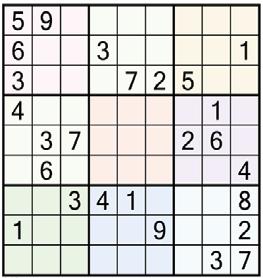
Across 1. Bawl (4)
4. Winsome (6)
8. Strangely unsettling (7)
9. Poster idol (3-2)
10. Seep (4)
11. Lively (8)
13. Very probably (9)
17. Bounce off (8)
19. Box lightly, as in training (4)
Last week
Across:
Down: 1. Unacceptable,
21. Stroke of luck (5)
22. Impressive (7)
23. Beer and lemonade mix (6)
24. Those people (4) Down 2. Fruit farm (7) 3. Fluff (4) 4. Post-injury treatment (13)
5. Boss (8)
6. Latin-American dance (5)
7. Muscular contraction (5)
8. Unsightly (4)
12. Processed meat (8)
14. Presume (7)
15. Move aimlessly (5)
16. At no cost (4)
18. Infatuation (inf) (5) 20. Warmth (4)
Traipse, 4. Choppy, 5. Torso, 6. Archaic, 7. Trick or treat, 13. Curtail, 15. Tedious, 16. Staple, 18. Aphid, 20. Bloke.
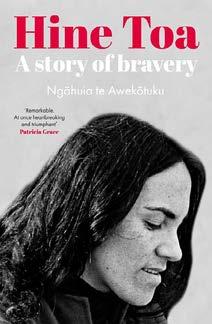
LRAFTERYJBXIESTDLR
ESPAKAYNKAAEZQITPT
RPLASTERASMZYEKBIA
YFMOKDFQSELBAGNIWC
AISLE ANNEXE APSE ARCH ATRIUM
DADO
DAIS
DOME EAVES
FLOOR
FOYER
GABLE GALLERY
ATTIC BANISTER BASE BEAM BEDROOM BLUEPRINT BOSS CHIMNEY COLUMN CORBEL CORNICE CRYPT CUPOLA
GIRDER GROIN
HALL IONIC JAMB JOIST KITCHEN LOBBY NEWEL OGEE OGIVE PANE PARAPET
PLAN PLASTER RAFTER RAIL RAMP SASH SCALE SILL SKYLIGHT STAIRS STEP WALL WING
All puzzles © The Puzzle Company
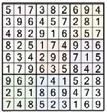
An incredible memoir by a trailblazing voice in women’s, queer and Maori liberation movements
Hine Toa
by Ngahuia te AwekotukuAn extraordinary memoir by a trailblazing voice in women's, queer and Maori liberation movements
In the 1950s, a young Ngahuia is fostered by a family who believe in hard work and community. Although close to her kuia, she craves more: she wants higher education and refined living. But whanau dismiss her dreams. To them, she is just a show-off, always getting into trouble, talking back and running away.
In this fiery memoir about identity and belonging, Ngahuia te Awekotuku describes what was possible for a restless working-class girl from the pa. After moving to Auckland for university, Ngahuia advocates resistance as a founding member of Nga Tamatoa and the Women’s and Gay Liberation movements, becoming a critical voice in protests from Waitangi to the streets of Wellington.
ABOUT THE AUTHOR
NGAHUIA TE AWEKOTUKU (Te Arawa, Tuhoe, Ngapuhi, Waikato) is the first female Maori Emeritus Professor from a university, with degrees from the University of Auckland and University of Waikato. An Emeritus Professor, she has worked as a curator, lecturer, critic, researcher and governor in the heritage and university sectors. She is a Member of the New Zealand Order of Merit, a Companion of the Royal Society of New Zealand, and a Fellow of the Auckland War Memorial Museum. She has returned to the pa, and serves on the Paepae Tapu o Ngati Whakaue. She loves cats and chocolate.

















